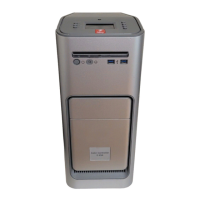INTRODUCTION 9
INTRODUCTION
This document includes information about servicing the E-43A. In this document, the
Color Controller E-43A is referred to as “the E-43A.”
Document conventions
NOTE: The NOTE format highlights important messages and additional information.
The WARNING icon indicates a warning concerning operations which, if not performed
correctly, may lead to death or injury. To use the E-43A safely, always pay attention to
WARNING icons and messages.
The CAUTION icon indicates a caution concerning operations which, if not performed
correctly, may lead to injury. To use the E-43A safely, always pay attention to CAUTION
icons and messages.
The IMPORTANT icon indicates operational requirements and restrictions. To operate the
E-43A correctly and avoid damage to the E-43A or other property, always pay attention to
IMPORTANT icons and messages.
About the E-43A
The E-43A adds computer connectivity and highly efficient PostScript and PCL printing
ability to the Pro C7110/C7100 copier/printer.
With the E-43A, customers can use the copier/printer as a PostScript printer and scanner.
Once it is connected to the copier/printer through the network, customers can print to the
E-43A from supported client computers on the network.
The E-43A ships with software pre-installed so that customers can use it immediately.
However, as part of servicing the E-43A, you may need to reinstall software.
How the E-43A operates
When a customer prints, the motherboard and printer interface board process image data.
The printer interface board is a custom board and allows the E-43A to communicate with the
copier/printer. The CPU controls the transfer of image data to and from the motherboard
and runs the PostScript interpreter. DIMMs hold image data during printing.
The interpreter rasterizes the page description file and compresses the image pattern into
memory using compression technology. The interpreter outputs the compressed raster data
through the image frame buffer memory to the printer interface board. The raster data is sent
to the copier/printer, which then renders the image on paper at maximum speed.

